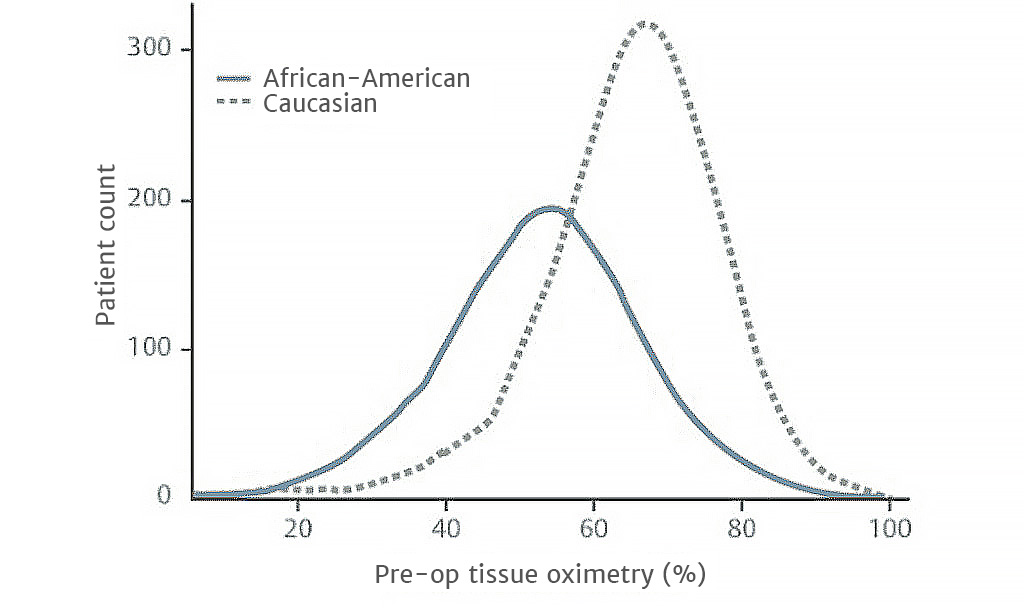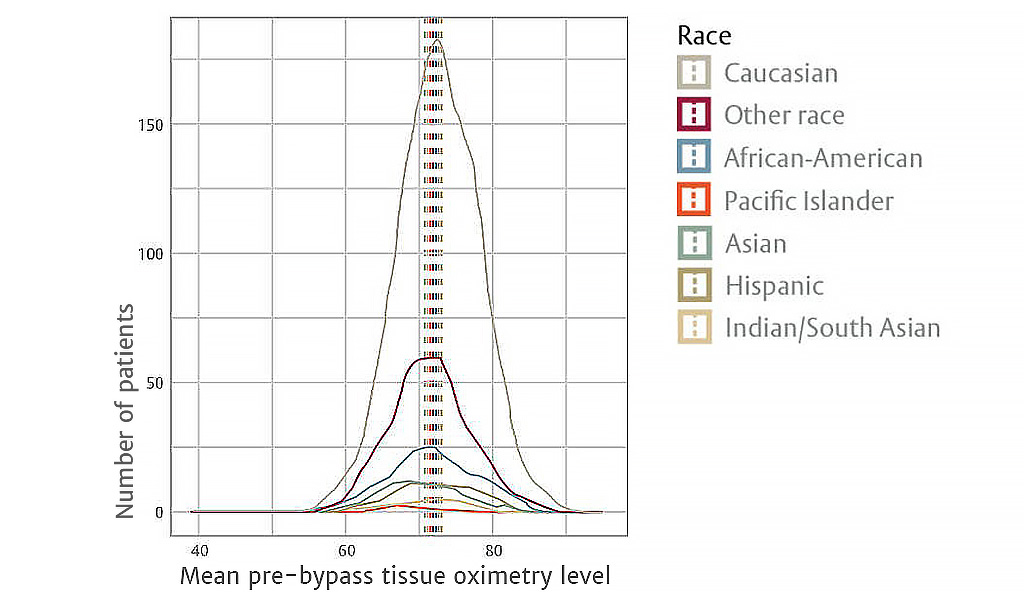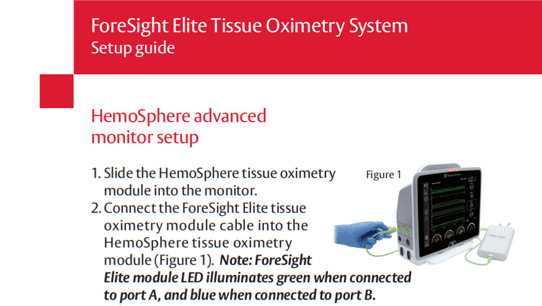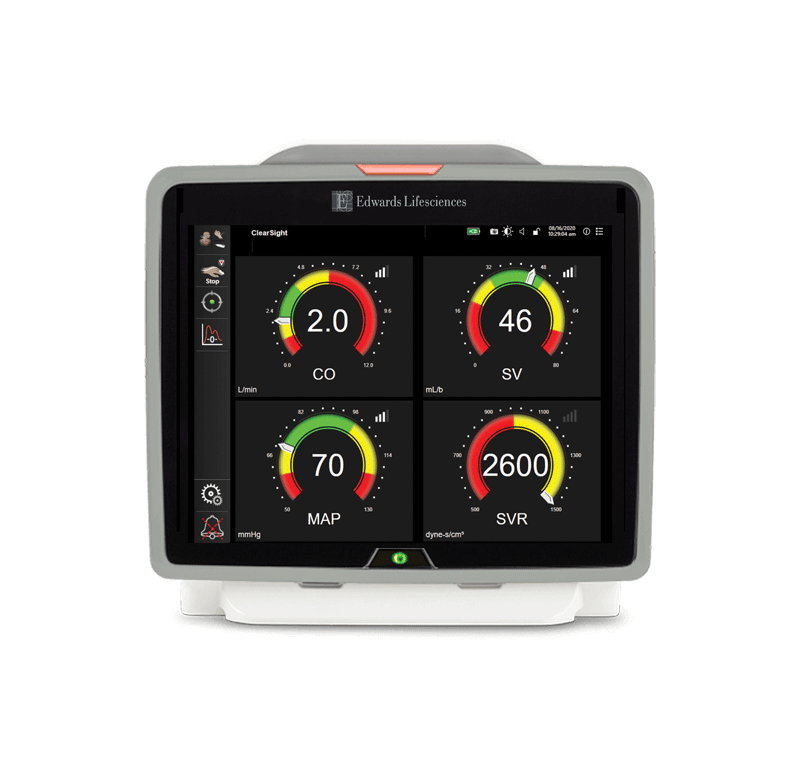ForeSight tissue oximetry sensor

The right monitoring makes a difference –
for all your patients' differences

The tissue oximetry and advanced hemodynamic insights you need to identify and even reverse cerebral desaturations for a diverse patient population are now available on one monitor.
ForeSight tissue oximetry sensor:
- Accounts for patient-to-patient differences, including skin tone, size, age, scalp-to-cortex distance and acuity
- Delivers absolute StO2 values, making a preinduction baseline optional
- Measures relative change in total tissue hemoglobin, providing insights into causes of StO2 changes
- Integrates with HemoSphere platform for an all-in-one view of patient perfusion
With ForeSight sensor, you can have the reliable, actionable tissue oximetry insights you need to intervene when it matters most.
The ForeSight sensor difference
Across a diverse patient population
As part of a complete hemodynamic profile
Designed for patient diversity
A tissue oximetry sensor designed with patient differences in mind
Due to the limitations in some other tissue oximetry sensor designs, patient differences including melanin or bilirubin concentrations, cranial thickness, etc., can cloud the accuracy – and therefore the reliability – of oxygenation measures.
With a unique sensor design and exclusive fifth wavelength of near infrared light (NIRS), ForeSight sensor can account for these patient differences – enabling reliable StO2 measures from patient to patient.
Study shows ForeSight sensor accounts for individual differences in melanin
ForeSight sensor is designed to penetrate 25% deeper than other technologies
Research shows that a 2 cm depth of penetration is insufficient for accurate measurement of StO2 in adult cardiac patients with a deeper scalp-to-cortex distance. But ForeSight sensor is designed to penetrate deeper. At 2.5 cm, ForeSight sensor can provide reliable readings for patients with greater than 2 cm scalp-cortex distance.
Absolute values, actionable insights

Preinduction baseline optional
The realities of the operating room don’t always allow for the opportunity to set a preinduction baseline – but with ForeSight sensor you can start monitoring without delay.
ForeSight sensor provides continuous, absolute StO2 readings without the need for a preinduction baseline – while still giving you the freedom to set treatment thresholds and trend from a patient baseline.

Insight into desaturation events
In addition to StO2 measurements, ForeSight sensor trends the relative change in total tissue hemoglobin (ΔctHb). The ΔctHb parameter gives you greater insights into potential causes of StO2 imbalances so that you can better understand and respond to desaturation events.

Algorithms tailored to placement on body
ForeSight sensor algorithms are calibrated and validated to both cerebral and somatic regions:
- Cerebral oximetry SctO2 calibrated and validated to SjvO2
- Somatic oximetry SmtO2 calibrated and validated to ScvO2
Additionally, you can view regional oxygenation values specific to sensor location via HemoSphere advanced monitoring platform.

Actionable insights to protect
Because ForeSight sensor integrates with HemoSphere advanced monitoring platform, you get more than numbers – you get comprehensive insights into patient perfusion, as well as the ability to identify the root cause of imbalances.
Cerebral and somatic tissue oxygen desaturations are common
All-in-one monitoring
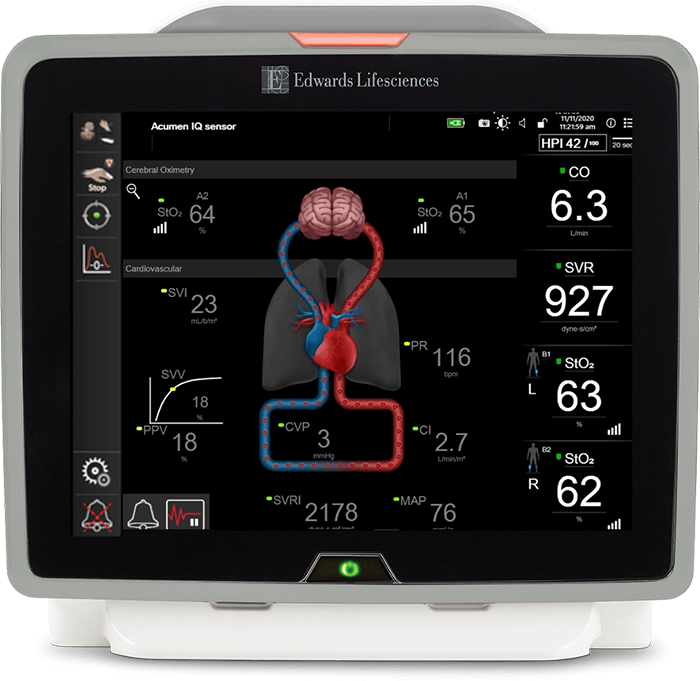
One monitor, comprehensive insights
Tissue oximetry measures are only one part of a surgical patient’s hemodynamic profile.
That’s why the ForeSight system is available as part of the HemoSphere advanced monitoring platform – making it the only system that allows you to see a comprehensive view of patient perfusion (including pressure, flow and tissue oximetry) on the same monitor.
This “all-in-one” view delivers comprehensive insights into patient perfusion that can help you drill down to identify the root cause of imbalances – enabling you to administer interventions with confidence.
Another parameter available on HemoSphere platform is Hypotension Prediction Index (HPI), available through Acumen HPI software. This first-of-its kind of predictive software alerts you to the likelihood of a patient trending toward hypotension – may help to prevent or mitigate cerebral desaturations caused by hypotension.
Also available with HemoSphere monitor

Acumen Hypotension Prediction Index (HPI) software
This first-of-its-kind predictive software alerts you to the likelihood of a patient trending toward hypotension – and may help to prevent or mitigate cerebral desaturations caused by hypotension.
| Model number | Description |
| FSESL | ForeSight Elite large sensor (≥40 kg), 20 sensors/box |
Related products

ForeSight tissue oximetry system for pediatric patients
ForeSight Jr sensor is designed to accommodate each pediatric patient's unique anatomy and physiology to deliver cerebral tissue oximetry values you can depend on.

HemoSphere advanced monitoring platform
The only modular hemodynamic monitoring platform to offer full-range cuff, sensor and catheter compatibility and first-of-its-kind hypotension predictive decision support software, HemoSphere advanced monitoring platform enables proactive, individualized patient management.

